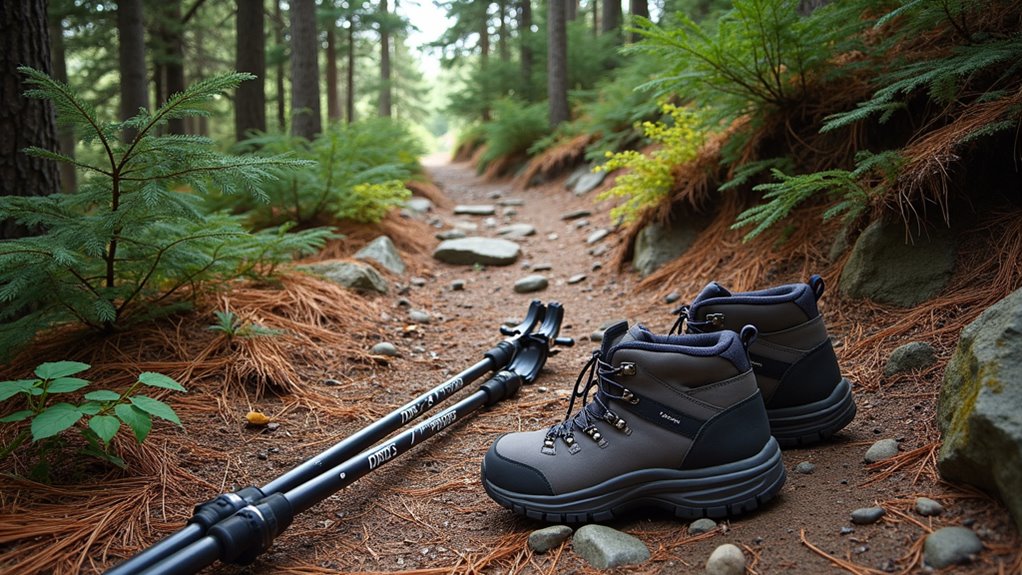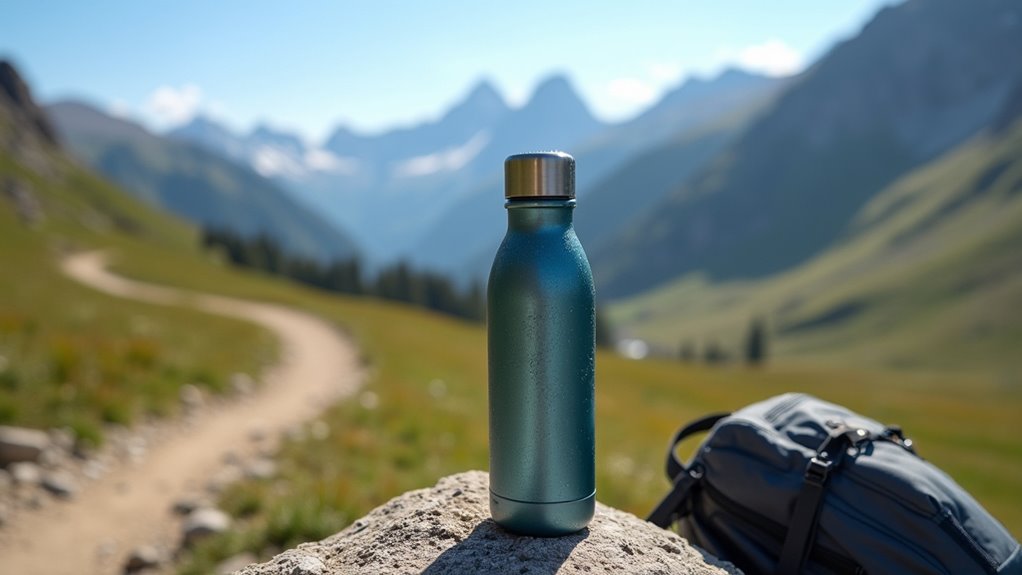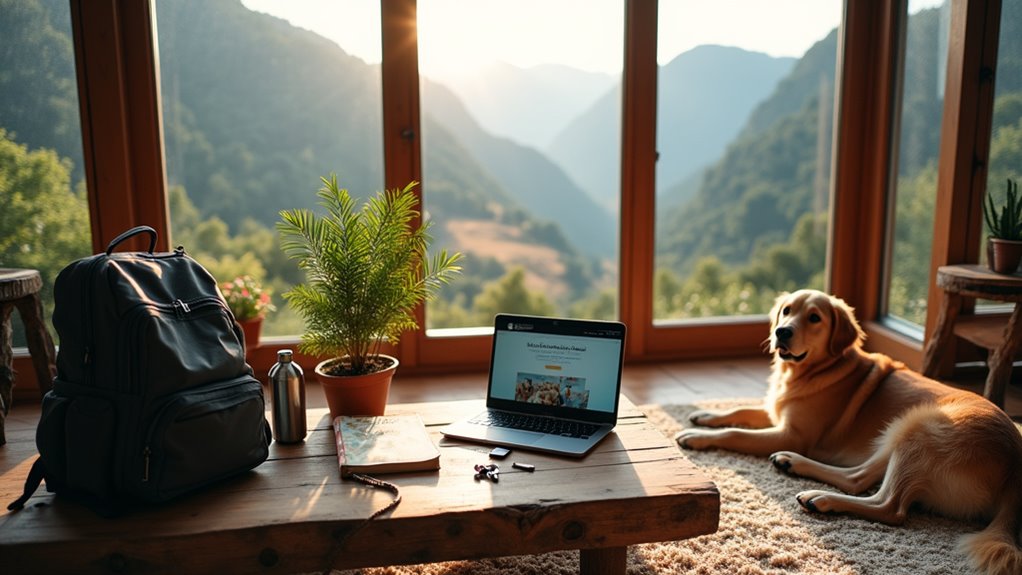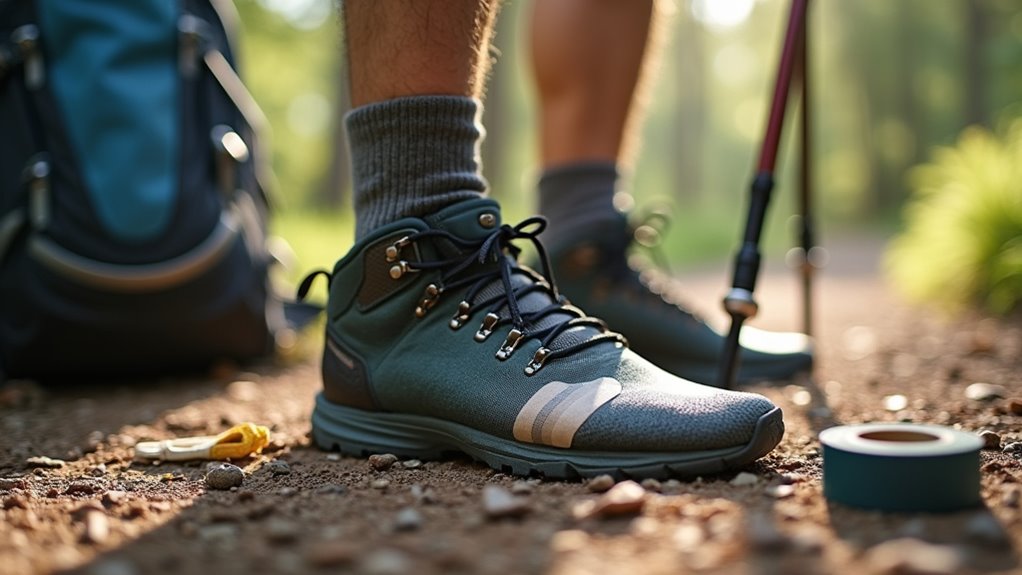To hike downhill without hurting your knees, use trekking poles to absorb impact and stabilize your steps, wear sturdy hiking boots with excellent traction and cushioning, and opt for smaller, controlled strides to avoid overextending your knee joints. Keep your knees aligned vertically with your hips and ankles, place feet flat to distribute weight evenly, and lean your chest slightly forward. Pre-hike conditioning and proper warm-ups further reduce injury risk and guarantee joint support. Explore additional techniques to protect your knees on longer hikes.
When you’re hiking downhill, your knees absorb considerably more impact compared to level or uphill terrain, increasing the risk of discomfort or injury if you’re not careful. To minimize strain, you should use trekking poles, which improve stability and balance, especially on uneven or rocky paths.
With trekking poles, you distribute your body weight more evenly, taking direct pressure off your knee and ankle joints. Engaging your arms and core through regular use of poles also builds strength and endurance, which indirectly supports knee health. Adjusting the pole length—shorter for descents—gives you ideal support and further reduces knee impact. Research consistently shows that regular use of trekking poles can reduce your risk of knee pain during downhill hikes. Proper footwear is also essential, as sturdy hiking boots with good traction and ankle support can further decrease stress on your knees.
Trekking poles evenly distribute weight, ease knee strain, and, when adjusted for descents, significantly reduce your risk of knee pain downhill.
Another effective strategy is to take smaller, controlled steps. When you avoid overextending your knee joints by using short, deliberate steps, you reduce the strain on your knees and improve your overall balance. This approach also helps you move more slowly and safely, letting you enjoy the trail without discomfort. Shortening and slowing your steps has been found to create a more natural stride, which minimizes pressure on your knees.
Each controlled foot placement diminishes the cumulative irritation your knees face over thousands of steps, while long, bounding strides can place excessive force on your joints. Being prepared with blister treatment supplies in your pack can help you address foot problems quickly before they affect your stride and put additional stress on your knees.
Maintaining proper leg alignment is also critical. Keep your knees vertically aligned with your hips and ankles to prevent unwanted twisting or torque that can damage your knee joints. Lean your chest slightly forward over your stepping leg to help maintain this neutral position.
Avoid letting your knees cave inward, as that increases stress on ligaments and cartilage. Aim for flat foot placement with each step, ensuring you distribute your weight evenly and reduce shock transmitted to your knees. Avoid landing on the balls of your feet, which can aggravate knee discomfort and destabilize your descent.
Choose sturdy hiking boots with ample arch support, cushioning, and reliable traction. They’ll absorb shocks, reduce the risk of slips, and help you maintain proper knee alignment.
Finally, prepare with warm-ups and leg conditioning to increase blood flow and flexibility, further reducing your risk of knee injury on the trail.









